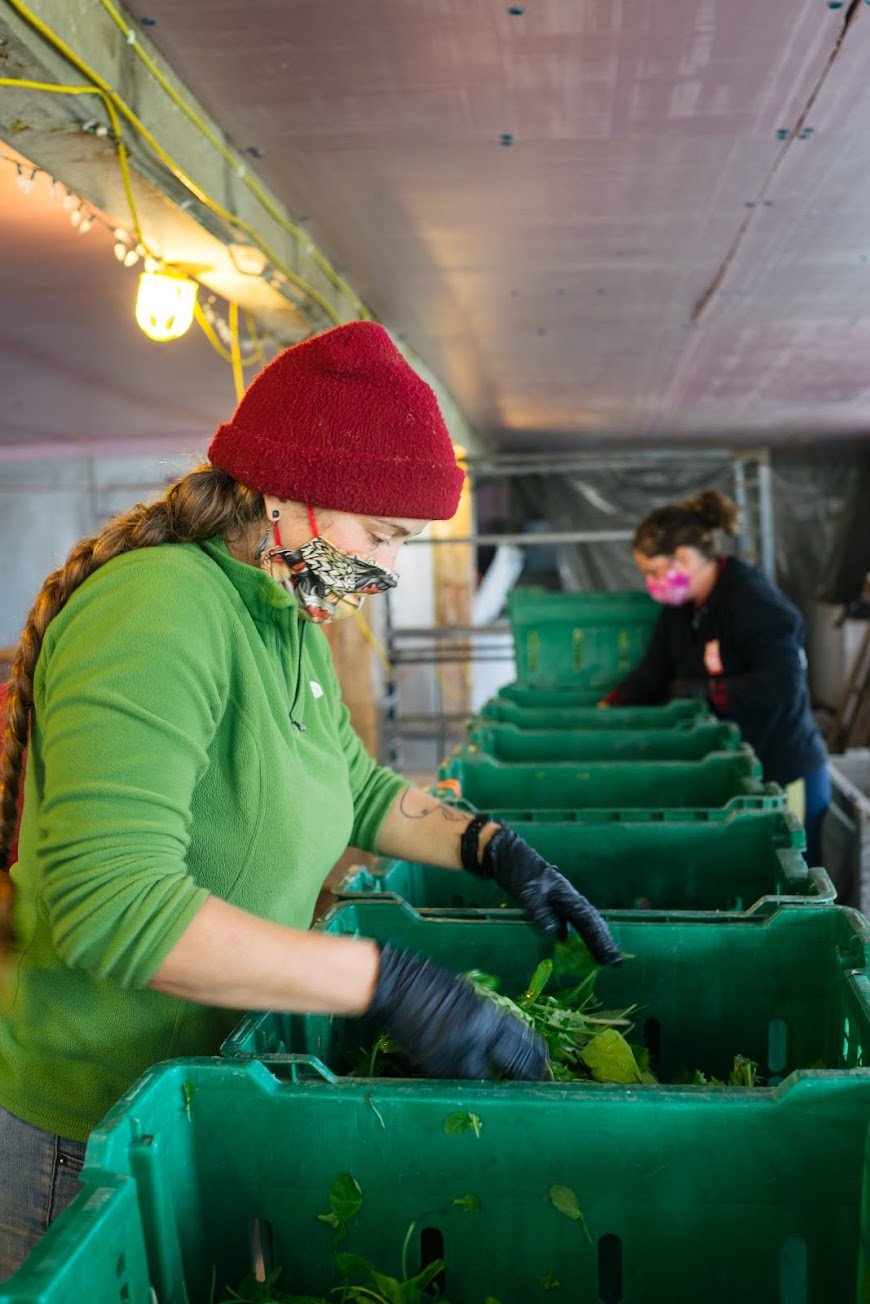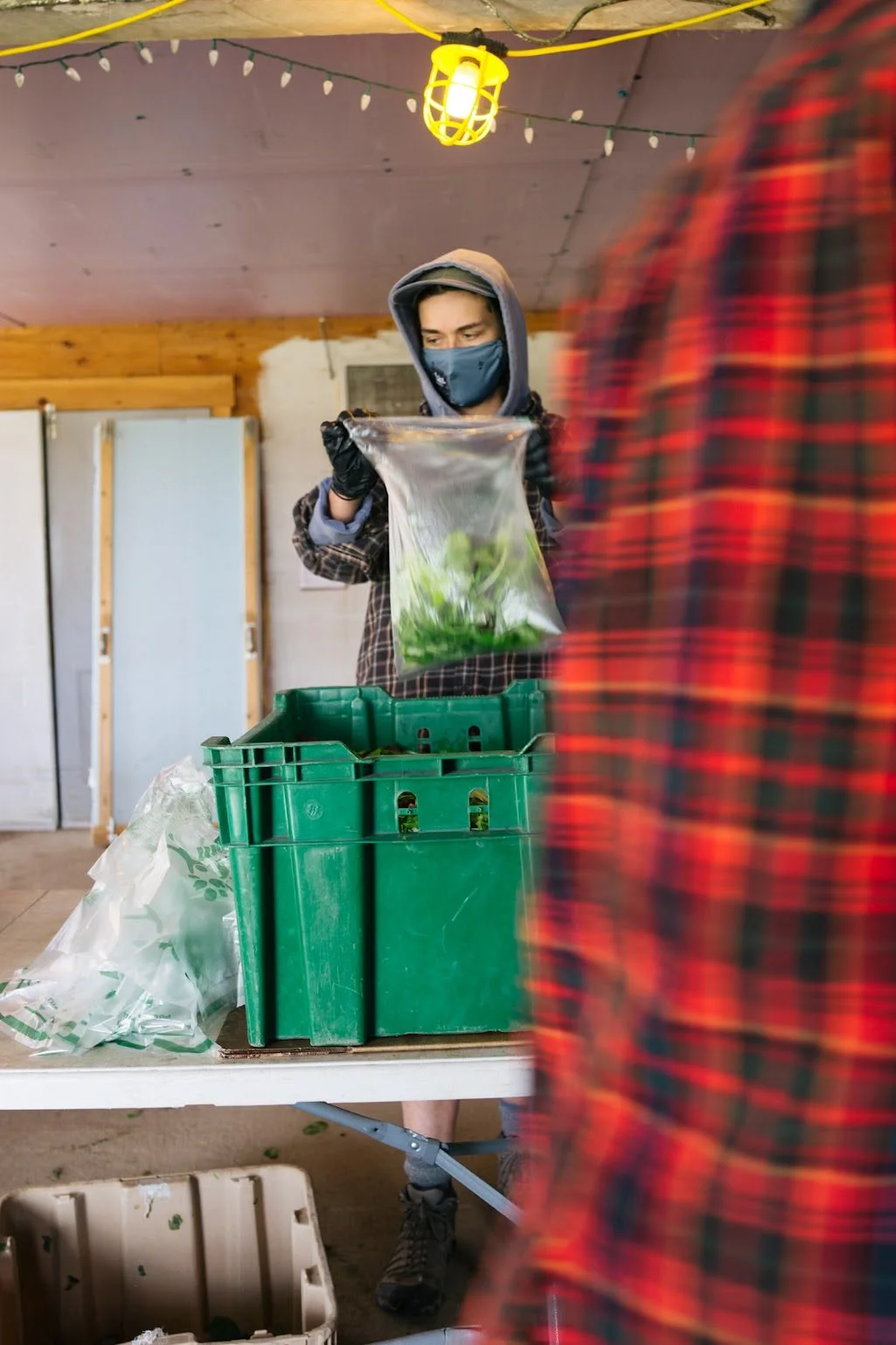Newsletter: Risky Business
First order of business... Thank You! We could not do this work without your support. It is truly an honor to work with this land growing food and fostering an ecosystem of plants, people and community.
Now, for some other details.
When Emmalyn and I took over Foxtail from Chris and Paul in December 2019, we had no idea what the next three years would bring. We didn’t know about COVID, about George Floyd, about historic drought(s). We didn’t know how expensive everything from lawnmower pulleys to well pumps to gasoline was going to get, nor did we have any idea that we’d have to order things like wax cardboard CSA boxes half a year ahead of when we would need them. Were we naïve? Maybe. But it isn't like we were flying into this thing totally blind, either.
We knew from years of past experience that organic farming wasn’t anywhere near as romantic as Instagram would have one believe. We knew we were signing up for decades of physical labor and small to non-existentent profit margins. We knew we wanted to make a difference in the world, and that seasonal work and travel wasn’t allowing us to impact our community in the ways that we needed. Though it turns out that we didn’t know the half of it, on December 19, 2019, we did know that we were taking the biggest financial and ethical risks of our lives.
I think the financial piece largely speaks for itself, but I’ll break it down a little bit. Simplifying greatly, Foxtail’s income primarily comes from three streams: the Spring CSA, the Fall CSA, and Summer farmers markets. Each of the CSAs bring in about $30,000, and farmers markets make us about another $50,000. Between all that, bedding plant sales, a couple wholesale contracts, Summer mini-bags and other miscellaneous income, between 2020 and 2021 we average about $130,000.00 in a year.
Our expenses basically match that.
Our mortgage is over $30,000 a year, employee wages are more than $40,000, utilities hover around $10,000, and gasoline costs from getting to and from markets and CSA deliveries total almost $5,000. Uncle Sam gets his cut of course, about $5,000 for property taxes and close to another $10,000 in employment (and self-employment) taxes. Shoot, even certifying our produce as organic costs us almost $3,000 a year! Add to that the cost of seeds, potting soil, compost, greenhouse supplies, payments for our delivery van, and other miscellaneous expenses, and that sexy six-figure payday starts to resemble a paycheck from my first job bagging groceries at Bergan’s SuperValu (RIP). When something unexpected happens (a well repair, car accident, hot water heater replacement, burst pipe in the house, the list goes on), the thin black ink turns red and thick with disturbing quickness.
When I think of ethical risk, what I mean is simply that some things we want to do stand in direct conflict with others. We operate an organic, human-powered, no-till farm. We pay our employees a living wage. We do our damnedest to make our food accessible to people in every tax bracket. That said, with our razor-thin margins, we are stretched thin and it almost never feels like enough. Our employees work way too hard for what we’re able to pay them, but the only way to raise our wages is to charge more for our produce. As it sits now, despite our best efforts, and even with market EBT matches and FMNP, I know we’re pricing folks out based on what we have to charge at market.
What is most important? What corners can we allow ourselves to cut? Who will we have to leave behind?
The answers are constantly shifting, and seem to be just as constantly out of reach. We'll never be able to feed everyone, to pay our employees enough, or change the world the the degree that it and it's inhabitants need. But what's the alternative? Giving up? Fully giving in to capitalism and only looking out for number one? We can't. The ship may be sinking, but we've got a little bucket and we intend to bale out as much water as we can. Chances are we'll end up at the bottom of the lake no matter what we do, but as esteemed philosopher Lloyd Christmas once said, "So, you're telling me there's a chance?"
- Cody
What’s in the Box?!
-Delicata Squash: These are the cutest of squash varieties, and they're a fun one to stuff with rice, meat or veggies because when cooked, you can eat the skin. Or, slice and roast with your favorite spices for a side.
-Cilantro: Surprisingly great as a pesto. I love using it on ramen or chow mein noodles with veggies. Also great mixed into a dressing for greens!
-Kickin' Greens Mix: A mix of sweet and spicy East Asian greens. Purples and greens make this a very striking mix for a salad. If you're not a fan of spice, slightly wilting these greens or mixing them into a soup will take away the kick.
-Hakurei Turnips: Love these — so tangy. The greens are wonderful too! Great in a side dish or wilted into mac a cheese.
-Red Head Lettuce: I am IN LOVE with the color of this lettuce! It makes a beautiful salad. Very tender and nutty in flavor.
-Sweet Mokum Carrots: Enjoy raw, roasted or steamed. A wonderful snack or side dish!
-Curly Kale: Touched with frost, this kale is sweet. Great finely sautéed into a side dish or added to a fall time soup.
-Lettuce Mix: 7 different varieties of tender lettuce greens. I find the red and green speckled romaine variety named Flashy Trout Back the most interesting looking.
-Crunchy King Radishes: Spicy and delicious! Great raw, steamed, and roasted! The greens are wonderful too. Maybe add them to a salad with the Napa Cabbage?
-Minuet Napa Cabbage: These Napa are not like the giants in kimchi. They are very tender and great in salad. Chop thinly and dress with your favorite vinaigrette. Great cooked into any stir fry too!



